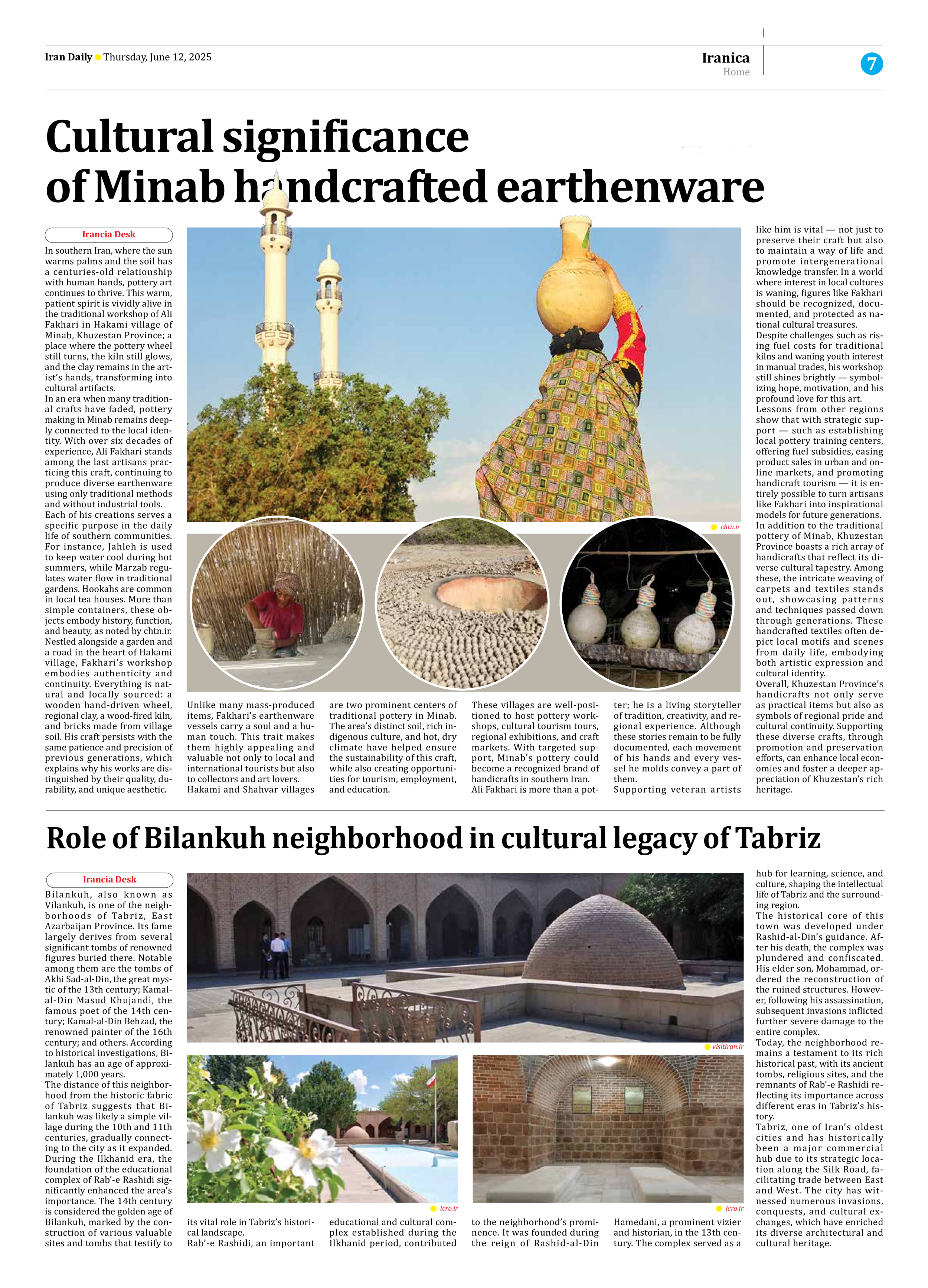
Cultural significance of Minab handcrafted earthenware
In southern Iran, where the sun warms palms and the soil has a centuries-old relationship with human hands, pottery art continues to thrive. This warm, patient spirit is vividly alive in the traditional workshop of Ali Fakhari in Hakami village of Minab, Khuzestan Province; a place where the pottery wheel still turns, the kiln still glows, and the clay remains in the artist’s hands, transforming into cultural artifacts.
In an era when many traditional crafts have faded, pottery making in Minab remains deeply connected to the local identity. With over six decades of experience, Ali Fakhari stands among the last artisans practicing this craft, continuing to produce diverse earthenware using only traditional methods and without industrial tools.
Each of his creations serves a specific purpose in the daily life of southern communities. For instance, Jahleh is used to keep water cool during hot summers, while Marzab regulates water flow in traditional gardens. Hookahs are common in local tea houses. More than simple containers, these objects embody history, function, and beauty, as noted by chtn.ir.
Nestled alongside a garden and a road in the heart of Hakami village, Fakhari’s workshop embodies authenticity and continuity. Everything is natural and locally sourced: a wooden hand-driven wheel, regional clay, a wood-fired kiln, and bricks made from village soil. His craft persists with the same patience and precision of previous generations, which explains why his works are distinguished by their quality, durability, and unique aesthetic.
Unlike many mass-produced items, Fakhari’s earthenware vessels carry a soul and a human touch. This trait makes them highly appealing and valuable not only to local and international tourists but also to collectors and art lovers.
Hakami and Shahvar villages are two prominent centers of traditional pottery in Minab. The area’s distinct soil, rich indigenous culture, and hot, dry climate have helped ensure the sustainability of this craft, while also creating opportunities for tourism, employment, and education.
These villages are well-positioned to host pottery workshops, cultural tourism tours, regional exhibitions, and craft markets. With targeted support, Minab’s pottery could become a recognized brand of handicrafts in southern Iran.
Ali Fakhari is more than a potter; he is a living storyteller of tradition, creativity, and regional experience. Although these stories remain to be fully documented, each movement of his hands and every vessel he molds convey a part of them.
Supporting veteran artists like him is vital — not just to preserve their craft but also to maintain a way of life and promote intergenerational knowledge transfer. In a world where interest in local cultures is waning, figures like Fakhari should be recognized, documented, and protected as national cultural treasures.
Despite challenges such as rising fuel costs for traditional kilns and waning youth interest in manual trades, his workshop still shines brightly — symbolizing hope, motivation, and his profound love for this art.
Lessons from other regions show that with strategic support — such as establishing local pottery training centers, offering fuel subsidies, easing product sales in urban and online markets, and promoting handicraft tourism — it is entirely possible to turn artisans like Fakhari into inspirational models for future generations.
In addition to the traditional pottery of Minab, Khuzestan Province boasts a rich array of handicrafts that reflect its diverse cultural tapestry. Among these, the intricate weaving of carpets and textiles stands out, showcasing patterns and techniques passed down through generations. These handcrafted textiles often depict local motifs and scenes from daily life, embodying both artistic expression and cultural identity.
Overall, Khuzestan Province’s handicrafts not only serve as practical items but also as symbols of regional pride and cultural continuity. Supporting these diverse crafts, through promotion and preservation efforts, can enhance local economies and foster a deeper appreciation of Khuzestan’s rich heritage.







